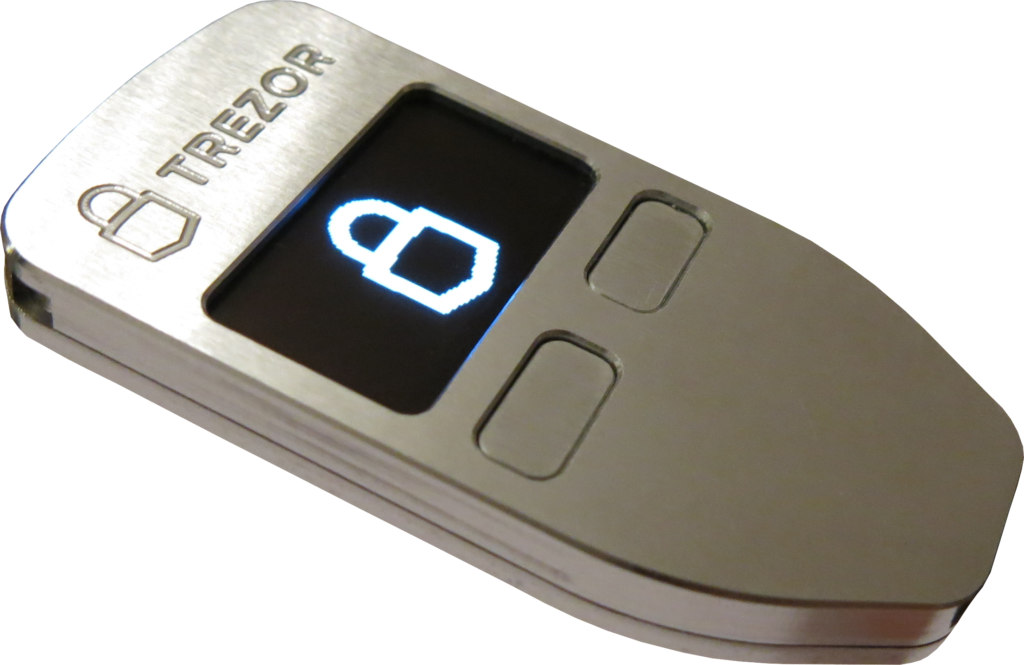How to recover crypto stolen from a Trezor wallet a practical guide for victims

(For victims of phishing, compromised vendor databases, or firmware-style attacks — written for Bitreclaim)
If your Trezor inbox started getting a flood of convincing-sounding firmware warnings, “verify your seed” links, or emergency patch emails, you’re not alone. Targeted phishing campaigns and leaked customer data (including from Trezor’s own support vendors) have made hardware-wallet owners prime targets. Even though Trezor devices are open-source and built with strong security in mind, human factors and data leaks can expose users to devastating social engineering campaigns. How to recover crypto stolen from a Trezor wallet practical guide for victims, was taylor made for these particular reason
This article walks you through what to do immediately, how crypto recovery works, what evidence to collect, and how a specialist recovery team (like Bitreclaim) helps trace, freeze, and recover stolen crypto. It’s long — read it through and follow the steps. The faster you act and the better your documentation, the higher your odds.
My trezor wallet got hacked, My account drained
Before diving in, let me drop a critical piece of context that many victims don’t realize:
It was widely reported that Trezor had one of their third-party support ticketing vendors breached in 2024, leaking customers’ personal information. That leak reportedly included email addresses, phone numbers, shipping addresses, and other artifacts tied to orders. The leaked database was later published or put up for sale, allowing malicious actors to get their hands on lists of hardware wallet users.
Even if only the email address was exposed, that’s often enough for targeted social engineering — especially given how many emails have already been compromised in data dumps (e.g. the Adobe leak, etc.).
In fact, over the past two months while assisting multiple customers, our smart contract and forensic engineers have personally observed that phishing campaigns are overwhelmingly targeting emails tied exclusively to Trezor purchases. In other words: the support-vendor leak is almost certainly fueling these more sophisticated campaigns.
Now, let’s get into what to do if your funds are already in motion or your device is under threat.
My Trezor was hacked (open a case with support@bitreclaim.com immediately)

- Don’t panic — but don’t act rashly.
Avoid doing anything that could further expose your seed or log additional data. Don’t paste your seed into any websites, copy it into questionable apps, or enter it under pressure. - Never share your full seed phrase or private keys.
No legitimate recovery service or exchange will ever ask for the entire seed. If someone asks, treat them like an attacker. - Disconnect the compromised environment.
If you suspect the compromise happened through Trezor Suite, your PC, or a phone, stop using them immediately. Isolate and preserve the devices (hardware wallet, computer, USB logs) as they are. - If you still control funds elsewhere, create a safe environment to move them.
Use a brand-new hardware wallet (or a freshly initialized, trust-verified device) on a clean machine. But only move funds after considering whether your seed was exposed — see the section below.
How to recover crypto stolen from a Trezor with Bitreclaim
Before moving any funds or formally working with recovery teams or law enforcement, gather and preserve the following:
- Transaction hashes (TxIDs) for stolen transfers.
- Wallet addresses involved (addresses you own and those used by thieves).
- Full email headers / raw phishing messages (EML files or .eml format, not just images).
- Timestamps of emails, device use, transactions (with timezone).
- Device metadata: Trezor model, firmware version, device serial (if known).
- PC/OS logs, USB logs, or system snapshots taken during or around the incident.
- Screenshots of phishing pages and their URLs.
- Support request transcripts / ticket IDs you submitted to Trezor or vendors.
- Purchase receipts or proof of ownership (without giving away seeds).
- Report number or cybercrime complaint if already filed.
Keep originals — don’t modify them. They will be critical in any legal/investigative process.
Trezor Hacked get support with Bitreclaim

- Trace the flow.
Use the stolen TxIDs to follow the movement of funds across addresses, mixers, bridges, or exchanges. Build a transaction graph. - Watch for exchange deposits.
If funds are funneled to a centralized exchange (CEX), that’s your best chance. The recovery team monitors in real time and hits exchanges with evidence as soon as funds land. - Handle laundering schemes.
Attackers may use mixers, DeFi bridges, or complex smart contracts. Recovery analysts trace through them using heuristics, link clustering, and on-chain behavior to identify endpoints or vulnerabilities. - Escalate when necessary.
If the funds go through exchanges that refuse cooperation, your recovery provider may escalate via legal and law enforcement routes. Exchanges have obligations under KYC/AML laws that can force freeze actions if given proper legal documentation.
How to recover crypto stolen from a Trezor wallet practical guide for victims
- If you think the seed was exposed, assume it’s compromised and move assets immediately to a fresh wallet on a clean device.
- If you never interacted with the phishing emails, your seed may still be safe. In that case, proceed cautiously. Consider migrating mid-term to a fresh seed or hardware.
Important: When moving funds, never reuse any event- or environment-exposed hardware or software. Use brand-new or verified safe hardware.
How Bitreclaim (or expert recovery teams) assist
- Fast on-chain tracing. We use chain-analysis tools and manual logic to follow stolen funds through complex flows.
- Legal & exchange engagement. We prepare evidence packages and submit requests to exchanges to freeze or recover assets.
- Forensic preservation. We ensure logs, email headers, system snapshots, and device images are handled in a forensically sound manner.
- Negotiation & seizure. When funds reach a cooperating exchange, we work via legal leverage to reclaim them.
- Full case oversight. We manage communication between the victim, exchanges, law enforcement, and counsel — minimizing your burden and maximizing recovery chances.
What to send to Bitreclaim (or your chosen recovery provider)
When writing your initial outreach, include:
- Subject: “Urgent: Trezor wallet funds stolen — request recovery”
- All TxIDs and involved addresses
- Email headers / raw phishing messages
- Screenshots + URLs
- Device info (model, firmware, serial if known)
- Support ticket numbers or transcripts
- Proof of ownership (purchase receipts)
- Police report or case number
- Contact details (for follow-up)
Do not send your seed words or private keys under any circumstances.
Hardening your Trezor & your ops going forward

- Use unique, dedicated email addresses for hardware wallet support/purchase (though mindful of vendor leaks).
- Enable passphrase / hidden wallet layers (a “25th word”) to compartmentalize risk.
- Verify firmware via reproducible builds and checksums.
- Store seeds physically (steel plates, etc.) — never type into online forms.
- Use separate emails (and accounts) for marketing vs critical support.
- Rotate or “retire” contact emails if they begin being targeted by phishing.
How to recover crypto stolen from a Trezor wallet practical guide for victims
If your Trezor–related inbox gets hammered with themed phishing and then funds disappear, don’t assume rescue is hopeless. The blockchain is transparent, and many attackers slip up or route funds through identifiable exchanges. Recovery pivots on speed, strong evidence, and coordinated legal escalation.
Because of that 2024 support-vendor breach, hardware wallet purchasers have increasingly become prey to highly targeted phishing campaigns. Based on what our smart contract and forensic engineering teams have observed over the past two months, nearly all new cases we assist show that emails used solely for Trezor purchases are now under sustained attack — likely because they were exposed in that vendor leak or subsequent resale.
If you need help, Bitreclaim specializes in recovering cryptocurrency from hardware-wallet compromises, phishing, and fraud. Reach out with your transaction hashes, email headers, device info, and police report, and we’ll spin up your case immediately — tracing the funds, contacting exchanges, and coordinating with smart contract auditors: bitreclaim.com.





One Response
My Trezor wallet was hacked and all my BTC is gone. I didn’t share my seed and used official tools only. I’ve tagged u/Trezor on X, but still no response. Please, I need urgent help. Is there any way to escalate this? I’m ready to provide all details privately. Thank you. PLS DM ME ASSP